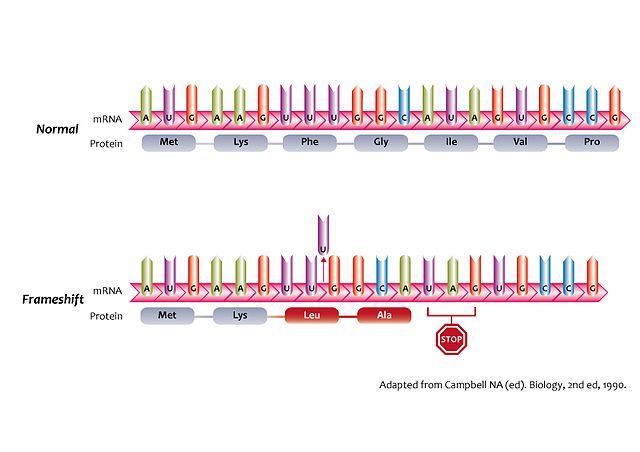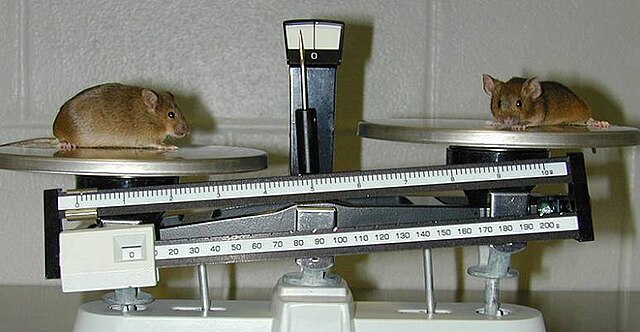Gene knockouts are a widely used genetic engineering technique that involves the targeted removal or inactivation of a specific gene within an organism's genome. This can be done through a variety of methods, including homologous recombination, CRISPR-Cas9, and TALENs.
A laboratory mouse in which a gene affecting hair growth has been knocked out (left), is shown next to a normal lab mouse.
Wild-type Physcomitrella and knockout mosses: Deviating phenotypes induced in gene-disruption library transformants. Physcomitrella wild-type and transformed plants were grown on minimal Knop medium to induce differentiation and development of gametophores. For each plant, an overview (upper row; scale bar corresponds to 1 mm) and a close-up (bottom row; scale bar equals 0.5 mm) are shown. A: Haploid wild-type moss plant completely covered with leafy gametophores and close-up of wild-type leaf. B–E: Different mutants.
Frameshift mutation resulting from a single base pair deletion, causing altered amino acid sequence and premature stop codon
A knockout mouse (left) that is a model of obesity, compared with a normal mouse
Gene targeting is a biotechnological tool used to change the DNA sequence of an organism. It is based on the natural DNA-repair mechanism of Homology Directed Repair (HDR), including Homologous Recombination. Gene targeting can be used to make a range of sizes of DNA edits, from larger DNA edits such as inserting entire new genes into an organism, through to much smaller changes to the existing DNA such as a single base-pair change. Gene targeting relies on the presence of a repair template to introduce the user-defined edits to the DNA. The user will design the repair template to contain the desired edit, flanked by DNA sequence corresponding (homologous) to the region of DNA that the user wants to edit; hence the edit is targeted to a particular genomic region. In this way Gene Targeting is distinct from natural homology-directed repair, during which the ‘natural’ DNA repair template of the sister chromatid is used to repair broken DNA. The alteration of DNA sequence in an organism can be useful in both a research context – for example to understand the biological role of a gene – and in biotechnology, for example to alter the traits of an organism.

A chimeric mouse gene targeted for the agouti coat color gene, with its offspring
Wild-type Physcomitrella and knockout mosses: Deviating phenotypes induced in gene-disruption library transformants. Physcomitrella wild-type and transformed plants were grown on minimal Knop medium to induce differentiation and development of gametophores. For each plant, an overview (upper row, scale bar corresponds to 1 mm) and a close-up (bottom row, scale bar equals 0.5 mm) is shown. A, Haploid wild-type moss plant completely covered with leafy gametophores and close-up of wild-type leaf. B–E, Different mutants.





